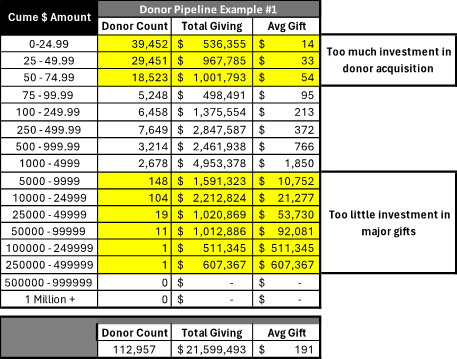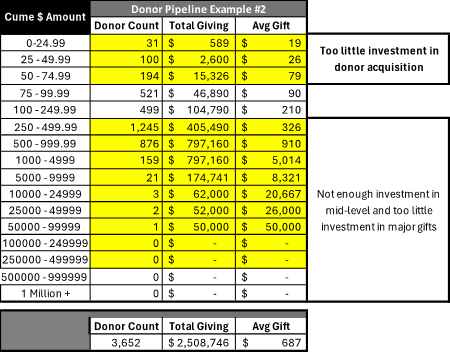This blog post is the fifth in a series of six titled, “The House Your Donor Lives In.”
The thing about fundraising budgets is that they are often allocated to various fundraising activities based on internal politics and/or history of spending.
By internal politics, I mean a powerful manager who makes demands on what they need to the exclusion of the other managers and/or programs. Or a founder who believes that everything they did in the past is how it should be done today. Or a board member with very strong opinions and influence who knows the right thing to do with the budget. Etc.
Internal politics. Jeff and I have seen this play out so often.
The other dynamic that plays in the allocation of a fundraising budget is the history of spending. “We have always spent this much in this area, so we need to keep spending this much.” Sounds logical, doesn’t it?
But both approaches or reasons for allocating the fundraising budget to the programs of fundraising are wrong and will lead to economic weakness and failure of the non-profit. Here’s why.
The donor pipeline (see graphic below), which starts with acquiring a donor and then moves that donor through general cultivation, mid-level, major gifts and finally planned gifts, is a very delicate ecosystem that requires balanced spending.

For those donors who want to migrate upwards in their giving and involvement, the funding of the programs that help them migrate is critical. But internal politics, history of spending, and, oftentimes, ignorance on how the economics of the donor pipeline work, is what gets in the way.
Here are a couple of examples of non-profit pipelines that are in trouble because of wrong investments:

In this example, the data shows that there is too much investment in donor acquisition (too many donors coming in) and not enough investment in major gifts. To acquire and then manage over 87,000 donors who are giving between $14-$54 a year is a very expensive investment with a very low return which means there is little net revenue for program and the overhead ratios are very high.
Secondly, with all the donors this organization has below the $5,000 level, you can see that not enough effort and investment is being made in major gifts which has the highest net revenue production of the entire pipeline.
In this next example, the opposite scenario is playing out:

Here there is not enough investment in the front end of the pipeline (the first stages of acquisition and cultivation), not enough investment in mid-level programs, and too little investment in major gifts. This lack of investment in acquisition will eventually severely damage the economy of this non-profit.
You can see, through these examples, how investments in the wrong places and in the wrong amounts can hurt the organization. Which is why an analysis of the donor pipeline should be a critical part of the annual planning and budgeting of a non-profit. This is why an important step you can take in your planning is to use the Donor Journey Health Checklist we will offer you at the end of this series of blogs. The checklist will help you assess those systems, processes, investments, and structural problems in your organization that, when fixed, will result in more net revenue for your good programs and keep your organization financially healthy.
In my final blog of this series, I will explore how you can create a future vision for each of your active donors. This future vision will include a clear understanding of what your donors want to do and how to help them realize that vision for themselves. Stay tuned.
Richard
This is Part Five of the Blog Series: “The House Your Donor Lives In”
- Read Part One: What Kind of Home Have You Created for Your Donor?
- Read Part Two: How Does Your Organization Think About Fundraising?
- Read Part Three: How Does Your Organization Treat Your Donor During Every Phase of the Journey?
- Read Part Four: Something to Present to the Donor Who Wants to Help MORE







0 Comments